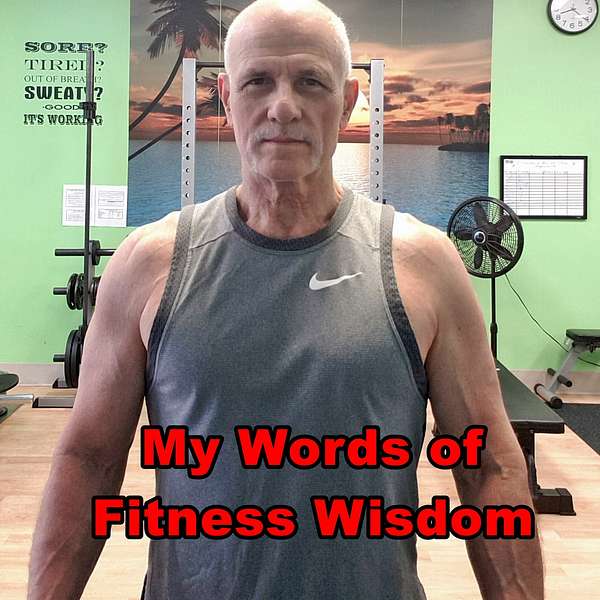
FITNESS REALITY & MOTIVATION
BODY BY WALLY Personal Fitness Training LLC exposes the reality of effective fitness, exercise, and diet strategies, debunking common myths in a cluttered industry. Despite annual sales of around 5 million diet books, obesity rates remain high. Our podcast, drawing on over five decades of Wally's experience in fitness disciplines like calisthenics, Shotokan Karate, bodybuilding, and the specialized techniques of isometrics and negatives, aims to inform, educate, and motivate.
Wally’s background includes training with notable figures such as Rick M., a Uechi-ryū champion, and Dr. Arthur Jones, the inventor of Nautilus gym equipment. He also draws inspiration from Charles Atlas, Jack LaLanne, and Bruce Lee.
Wally continues to blend old-school methods with modern science through circuit and interval training systems. Join us to clear up the fitness confusion and optimize every aspect of your workout. Thank you for your support, and we hope our podcasts guide you to fitness success.
Many blessings, BODY BY WALLY Personal Fitness Training LLC.
Psalms 144:1.
FITNESS REALITY & MOTIVATION
STEADY STATE CARDIO - HIIT - RUNNING
The results suggest that although HIIT protocols are time efficient, but they are not superior to conventional exercise training in sedentary young adults.
PROS AND CONS OF HIIT TRAINING
PROS (In HIIT cardio, you use 80-90% of your maximum heart rate for a shorter period. When you’re doing HIIT cardio, you shouldn’t be able to hold a conversation.)
· Improved Performance: Some studies have shown that while steady-state training taxes the aerobic system, HIIT workouts can stimulate both the aerobic and anaerobic systems. That means your body has more stamina and performs better in all your workouts, no matter what they are.
· Improved Insulin Sensitivity: The more sensitive your body is to insulin, the less your body needs that insulin to lower blood glucose levels. In terms of exercise, that means your HIIT can help your exercising muscles use glucose for fuel more efficiently.
· Improved Calorie Afterburn
· Improved Heart Health: HIIT training can help lower blood pressure and improve your heart health.
CONS of HIIT:
· Can Be Uncomfortable: While you can modify the workouts to fit your fitness level, the idea is to get as far out of your comfort zone as you can. So these workouts are tough.
· Not for Beginners: If you're coming from a completely sedentary lifestyle or returning to exercise after an injury.
· Risk of Injury: Exercises like sprints, plyometrics, and jumps come with a risk of injury if your body isn't prepared for that kind of movement.
Risk of Burnout or Overtraining: Too much HIIT can be lead to burnout, an increased risk for dropping out of exercise. 1-2 x's wk recommended.
PROS of STEADY-STATE (about 50-60% of your max heart rate for at least 45 min.)
Advantages
Exercising below the ventilatory threshold for an extended period of time puts less physical stress on the cardiorespiratory system and can be an effective way to prepare for an endurance event.
- Increases mitochondrial density in type I (slow-twitch) muscle fibers, which can improve aerobic metabolism.
- Increases cardiac efficiency; specifically, elevating stroke volume and cardiac output at a lower heart rate.
- Steady-state training to improve aerobic efficiency generates less metabolic waste and cellular damage than HIIT workouts.
- Less Stress on the Cardiorespiratory System: Because you're working at a lower intensity, you can improve your endurance without putting as much stress on the heart and body as higher intensity exercise.
- Increased Endurance: Longer, slower exercise helps build endurance in both your heart and your muscles.
- improved Ability to Use Fat: When you work at a lower intensity, fat is your main fuel source. Staying at that level allows you to save glycogen stores.
When you exercise at a high intensity your heart often beats so fast that the left ventricle — which stores oxygenated blood momentarily before pumping it out — can’t refill completely between contractions. At a slightly lower intensity (thus lower heart rate), the left ventricle fills completely before it contracts, which causes it to grow in capacity — and pumps more blood with each contraction — over time. This triggers your HR to drop substantially, both at rest and during exercise.
[Find out more about us:
https://bodybywally.com
https://www.facebook.com/FitnessInAugusta]